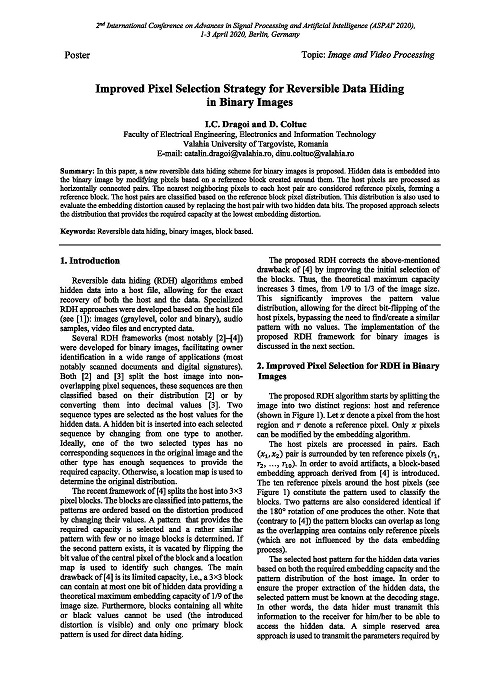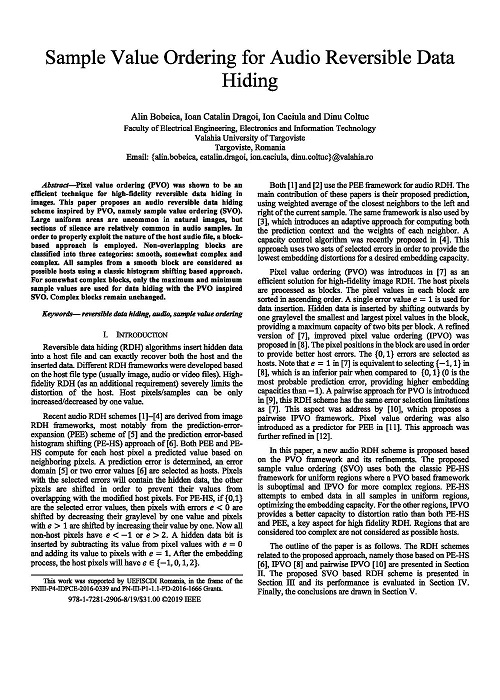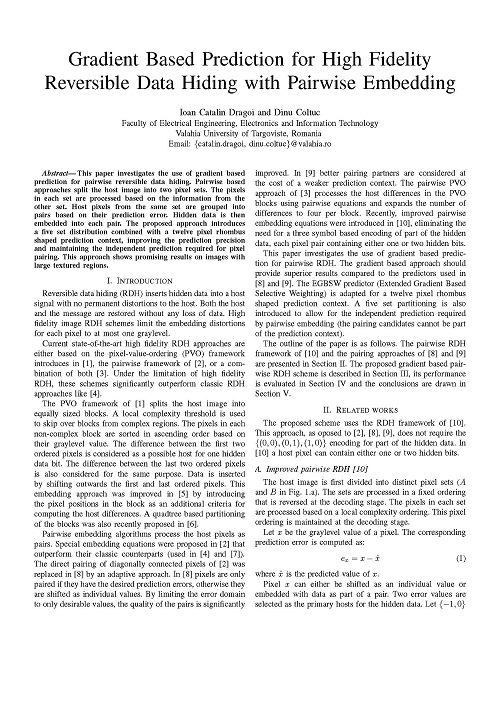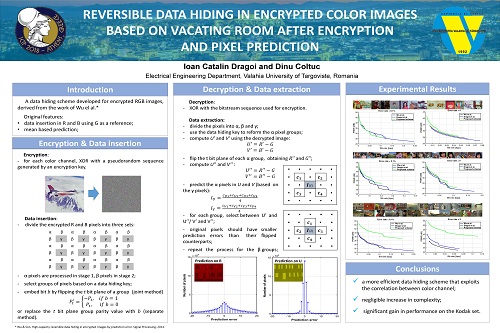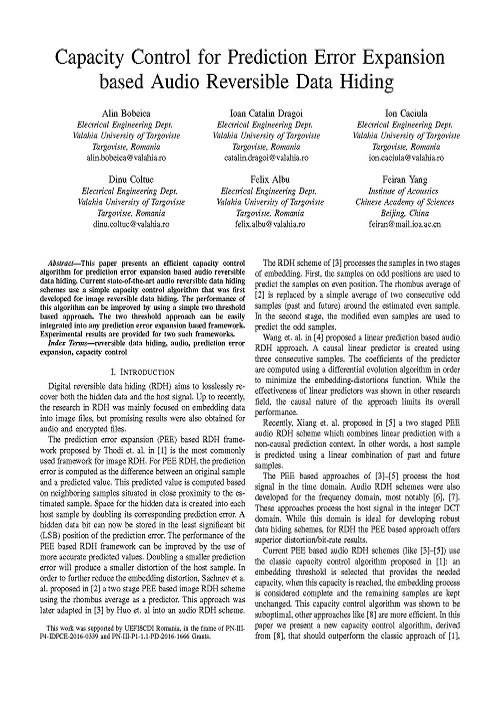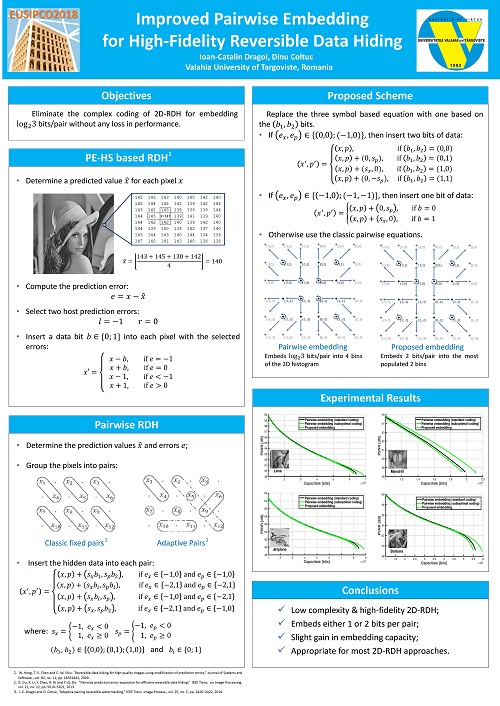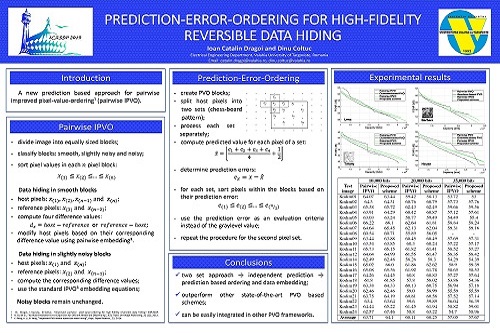In this paper, a new reversible data hiding scheme for binary images is proposed. Hidden data is embedded into the binary image by modifying pixels based on a reference block created around them. The host pixels are processed as horizontally connected pairs. The nearest neighboring pixels to each host pair are considered reference pixels, forming a reference block. The host pairs are classified based on the reference block pixel distribution. This distribution is also used to evaluate the embedding distortion caused by replacing the host pair with two hidden data bits. The proposed approach selects the distribution that provides the required capacity at the lowest embedding distortion.
Posters & Articles
